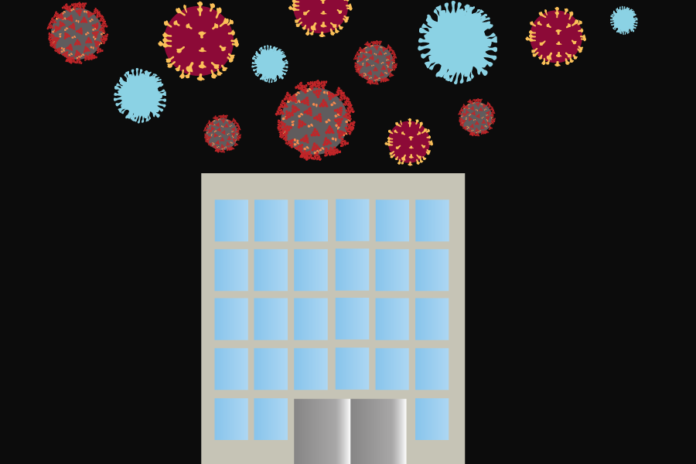Humidity, ventilation among factors that affect viral transmission within buildings
The built environment and building design may influence disease transmission more than previously believed, according to a collaborative review recently published by researchers from UC Davis and the University of Oregon.
The review highlights various structural elements of buildings, such as ventilation, air flow patterns and humidity levels, which may influence how easily a virus spreads between people within a building.
Among those involved in the collaborative journal review were Professor Jonathan Eisen in the Department of Medical Microbiology and Immunology, David Coil, a project scientist, and colleagues from the Biology and the Built Environment Center at the University of Oregon.
“When the pandemic occurred, we started thinking about how we could contribute to the fight against this virus,” Eisen said via email. “We have been putting in many proposals on various topics and two have recently been funded, but we do not have any major results yet [as] we just started this work.”
Due to the recent emergence of COVID-19, little research has been formally published relating viral transmission and the built environment. UC Davis researchers, however, elected to continue their study with the Biology and the Built Environment Center at the University of Oregon due to their expertise on the subject.
“There’s a ton of information cycling around about COVID-19, most of it related to clinical stuff and human transmission and things like that,” Coil said. “Our group in Oregon has worked for many years on the microbiology of the built environment.”
The focus of the review and the topic of viral transmission is highly multidisciplinary, with relevant links to various fields including architecture, engineering and microbiology.
“The review paper was just that — a review,” Eisen said. “With the other authors we went through the literature and reviewed what was known about the virus and the built environment.”
Although more research must be completed before definitive statements can be made regarding COVID-19 and the built environment, there are general guidelines that can be followed to reduce transmission likelihood within buildings, such as considering that direct contact is the largest risk for viral transmission.
“Sunlight is known to inactivate a lot of viruses, [and] it’s not good for envelope viruses like SARS,” Coil said. “Heat inactivates a lot of viruses including SARS, [although] it depends on what the transmission looks like.”
Researchers agree that increasing ventilation and sunlight levels in existing buildings could prevent disease transmission; however, negative pressure and isolation are more effective at mitigating viral spread in a building when an infected individual is already present.
“If you put a fan in the window, pushing [air] out, you would be drawing air from the house into that room and then [outdoors],” Coil said. “That would be negative air pressure.”
Though more research on the relationship between viral transmission and the built environment is in progress, scientists have already identified a few factors as having significant effects on transmission within the built environment.
“In general, the built environment plays major roles in transmission of a huge number of infectious diseases,” Eisen said. “Examples of issues to consider include filtration, relative humidity, temperature, cleaning, surface materials, water storage, and more.”
Written by: Dina Gallacher — science@theaggie.org




